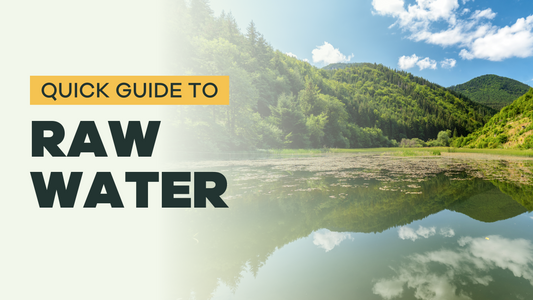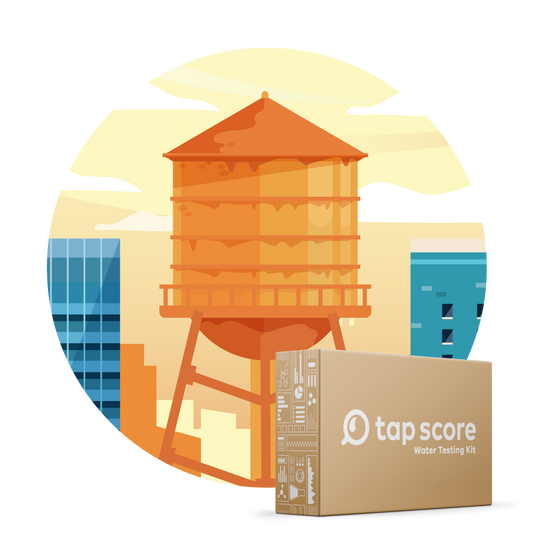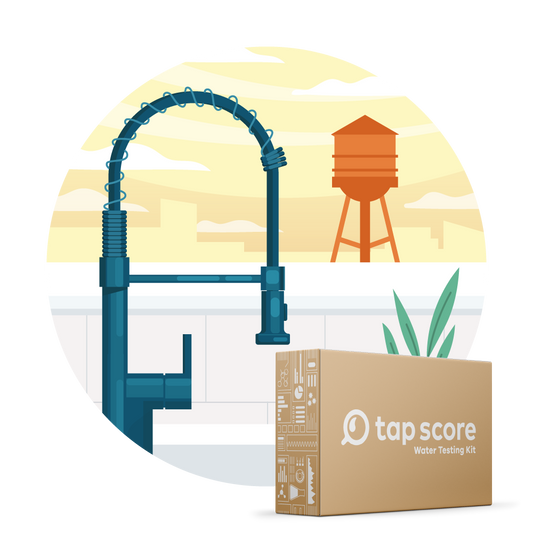
How the Exposome Impacts Your Health
Our blog is written by real experts— not AI. Each guide is carefully reviewed and updated based on the latest research. Plus, with no affiliate links, you can count on unbiased insights you can trust.
The “exposome” is considered the environmental equivalent of the genome.
First defined in 2005, the exposome is the totality of human exposures over a lifetime and their influence on health. Exposures can be environmental or social. Read on for an introduction to how exposures accumulate and how health and disease risk factors extend far beyond our genetics.
In this article, we focus on specific exposures relevant to your immediate environment. To understand exposures and the exposome, we have to cover some important environmental health basics:
- What are exposures?
- What is the difference between dose and exposure?
- How does your body detoxify?
- What’s the difference between acute and chronic toxicity?
- What are the outcomes of toxic exposures?
- What are common sources of environmental exposure?
- How can you minimize your environmental exposure risks?
What Are Exposures?
As our environment changes and we spend more time indoors, our health risks change as well. Climate change exacerbates extreme weather events, and those storms and wildfires expose us to new toxicants in our air, water, food, and everyday life.
For example, if you've ever been in a wildfire or near one, you know that the smoke can leave you feeling lightheaded, nauseous, and dizzy. Not all exposures lead to an acute or rapid onset of symptoms, though. Most indoor exposures are "silent"—we do not see, smell, or taste them. This means you may not notice the immediate signs of potentially harmful exposures. However, these exposures may buildup and have compounded effects over time.
The good news is that the human body is incredibly resilient. Faced with environmental stress from air, water, food, chemical products at home, mold, and dust, most of us live relatively unaware of the potential impacts. Every person is different, too. We each have differential susceptibilities to contaminants.
Our social and economic situations also impact both what we are exposed to, and how it impacts us. This relationship between social and environmental exposures has come to be named the “socio-exposome.” Social and political inequities often determine the conditions in which people are born, live, work, and age. Social inequity may result in disproportionate exposure to environmental hazards for certain populations, specifically disadvantaged communities and/or communities of color.
Exposure does not equate to health risk in a linear way, which is why the science of how environmental pollutants impact our bodies is so complex.
Nevertheless, the consensus remains that reducing your exposure to harmful toxicants is likely to lower your risk of associated health outcomes.

What Is the Difference Between Dose and Exposure?
Though related, dose and exposure are not quite the same thing.
-
Exposure is the level of toxicant outside the body that you come in contact with.
- Dose is how much of a toxicant gets inside your body.
Toxicants can affect the body in many ways, which may be influenced by the length of exposure as well as your body’s response to the toxicant.
To better understand what makes something a toxicant—or how anthropogenic toxins like chemicals affect your body and your health—check out this guide to toxicology:
What Is Toxicology?—SimpleLab Tap Score
How Does Your Body Detoxify?
Harmful substances often wind up in the blood, which reaches every part of the body.
That said, the human body is equipped to be its own detoxification system, to a certain degree. From the skin to the respiratory system to the intestines, liver, and kidneys, each of these organs/organ systems help your body breakdown, filter, and excrete harmful substances from your body.
Sometimes, however, there is too much of a toxicant (acute exposure), or any amount of the toxicant can easily cause mutations (typically these are carcinogenic). This can result in acute or chronic health effects.
Acute vs. Chronic Toxicity: How Length of Exposure Impacts Health
A short-term exposure to a particularly potent chemical is called acute toxicity and is characterized by intense and immediate health impacts after short-term exposure to a chemical. Typically, acute exposure happens if you are exposed to a high dose of a toxicant.
Chronic toxicity occurs when the body is exposed to a chemical for a long time and amasses health effects “slowly.”
We mentioned that exposome science aims to measure all of the exposures someone experiences throughout their lifetime and how this affects their health. The body has built-in mechanisms to tolerate and get rid of toxic chemicals, but these only work up to a certain extent, and people have different tolerances.
What Are the Outcomes of Toxic Exposures?
All organ systems can be harmed by exposure to toxicants.The table below shows some examples of toxicants and the systems they affect. We’ve compiled this list through the CDC and added a few key contaminants of interest. Note that the potential effects are sometimes acute (allergic reaction) and sometimes chronic (e.g. Parkinson’s Disease).

Sources of Environmental Exposure
People spend as much as 90% of their time indoors, and because of this, most of our exposures are experienced indoors.
Many people assume that staying inside is safer. Walls and windows separate you from the outside air, and water comes out on-command from your faucet. Your food is triple washed and vacuum-sealed. If you’ve read any other Tips for Taps articles, though, you know that there is a lot more to your indoor environment than meets the eye.
Homes, schools, and office buildings all have exposure risks unique to being inside.
Outdoor allergens, pollutants and particulate matter, too, can concentrate indoors. We’ll take you through some of the major exposure risks.
Inhalation: How Does Indoor Air Pollution Affect Health?
More than oxygen enters our lungs on each breath. Tobacco smoke, wood stoves, candles, space heaters, asbestos, and mold are some examples of indoor sources of air pollution.
- Household cleaning products can also impact your lungs, as many of them emit toxic volatile organic compounds (VOCs) that have been linked to occupational asthma.
- If your house was built on soil or rock with uranium in it, the uranium can break down and release radon gas (which concentrates in your home).
- The levels of many of these indoor pollutants can be limited by proper ventilation. Controlling humidity can limit mold growth, too.
The health effects of these indoor pollutants vary widely. Radon and asbestos can cause lung cancer. Improperly vented wood stoves, on the other hand, can increase the risk of carbon monoxide poisoning by releasing noxious substances.
Dermal Contact: How Do Toxicants Affect the Skin?
Your skin is your largest organ, and often serves as the first line of defense against harmful substances. Skin contact with any contaminated environmental medium—such as water or dust—can expose you to toxicants. We encounter many of these risks going through everyday activities like bathing, washing hands, cleaning, or gardening.
- Household cleaning products can expose you to harmful chemicals, either during use or after the chemicals have settled on surfaces. These products include bleach, chlorine, ammonia, and other chemicals that irritate the skin. The most common reactions to dermal exposure are irritation and allergic reactions, but certain chemicals can also cause pigment alterations or skin cancer, depending on the type and duration of exposure.
- If you have a garden or a backyard where your kids play, pesticides and insecticides in the soil or on plants can lead to unwanted exposures (also through inhalation or ingestion). The most common household pesticide—glyphosate, also known as RoundUp—is currently hotly debated for its carcinogenic impacts on people using the product in their yards.
Using home remedies for cleaning and minimizing pesticide use are key exposure reduction strategies.
Ingestion: How Foods and Drinks Increase Your Exposure to Contaminants
The food we eat and the water we drink are primary exposure pathways for unwanted contaminants. Small children are more susceptible to toxic exposures because of their size and at a higher risk of being exposed due to their habit of eating everything in sight (e.g. ingesting lead paint can cause lead poisoning quickly).
- Soil quality and farming practices are directly associated with food quality. (What To Do About Lead in Your Soil). Unfortunately, exposures to pesticides and hormones can make it to your plate from the farm. But, the cooking material also impacts your health.
- Non-stick pans use chemicals known as 'PFAS' that have long-term, problematic health impacts. (What We Know About PFAS and Your Health)
- Tap water (especially private well water and surface water) can become contaminated as it moves from the source, through the distribution lines, and to your home. Common concerns that we cover frequently at Tips for Taps are: pesticides, agricultural runoff, and heavy metals. While some of these contaminants are invisible and tasteless, others have funny smells like rotten eggs or turn your water yellow or brown.
Not all of these signs indicate exposure to something harmful. Indeed, some of the riskiest contaminants are invisible (e.g. arsenic is odorless and colorless even in very high concentrations).
If you’re concerned about the water coming from your faucet, shower head, or well, the Tips for Taps blog is a great place to start. We have guides on why people test their water, potential water concerns, and how to deal with them. Pipe and faucet materials, leaks, and water treatment are all pieces to the puzzle of understanding what's in your water. If you have concerns about what is in your water, then getting a home water test is a great way to ensure your home health and wellbeing.
Minimizing Your Environmental Exposure Risks
Now that you understand some of the potential risks of toxic exposures, you'll be better prepared to protect yourself! Prevention is the most effective way to minimize your exposures. Here are some suggestions for where to start:
Inhalation: How To Reduce the Risks of Indoor Air Pollution
Ventilating can help reduce the indoor toxicants, and filtering outside air can limit the levels of outdoor pollutants inside. To maintain good air quality, you should also:
- Check regularly for leaks and mold
- Use a high-efficiency vacuum to reduce dust
- Limit fires and candle use to reduce particles in the air
- Cook with the fume vent on to reduce exposure to polyaromatic hydrocarbons that come off of cooking oil when heated
If you're exposed to a wildfire, check out this guide to wildfires and water quality for mitigation strategies.
Dermal Contact: How To Reduce the Risks of Skin Exposure to Contaminants
When you’re shopping for cleaning supplies, pay attention to the labels. For cleaning supplies, it’s always better to use home remedies because store-bought products have a variety of potential irritants.
- A simple DIY vinegar, lemon and soap cleaning solution is an easy fix that is safer on your hands and lungs than most store-bought cleaning products. This reduces inhalation exposures as well.
- When you clean, you should always wear gloves and store supplies away from children.
- Reducing pesticide use can also keep you safe, natural fertilizers and composting are great alternatives.
Ingestion: How to Reduce the Risk of Consuming Toxicants
For water, we always advocate regular testing. Once you know what is in your water, you can treat it for any contaminants you find.
How to test your water for the most common environmental risk factors
As far as food and beverages go, try to:
- Avoid foods/drinks with additives or preservatives
- Eat organic if possible**
- Use ceramic or cast iron cookware to reduce your exposure to PFAS
**Given how expensive organic food is for many budgets, some people have begun advocating to eat organic for the most risky food categories (e.g. here's a list of 20 foods to buy organic because they typically have higher pesticide/fungicide levels).
If you’re worried about pests in your garden, try natural insecticides like soap spray or garlic.
More Questions About the Link Between Environmental Exposures and Your Health?
The SimpleLab team is in the business of helping you understand what's in your drinking water through a variety of water testing packages, but we're happy to answer any questions you might have about environmental exposures. Get in touch with the SimpleLab team of chemists and engineers here for more information.
Sources and References
▾Exposome and Exposomics - NIOSH Workplace Safety and Health Topic
Is Your Water Safe After a Hurricane? | SimpleLab Tap Score
Wildfires and Water Quality | SimpleLab Tap Score
What To Do If You Have Mold In Your Home | SimpleLab Tap Score
The Socio-Exposome: Advancing Exposure Science and Environmental Justice in a Post-Genomic Era
What is Toxicology? | SimpleLab Tap Score
Exposome and Exposomics - NIOSH Workplace Safety and Health Topic
Health Effects from Chemical Exposure | Hazardous Substances and Sites
Which Organ Systems Are Affected By Toxic Exposure(s)? | Taking an Exposure History | CSEM
Health Risks of Indoor Exposure to Particulate Matter: Workshop Summary
Cleaning Supplies and Household Chemicals
Radon Gas at Home | SimpleLab Tap Score
What Are Possible Sources of Indoor Air Pollution? | Taking an Exposure History | CSEM
Exposure Assessment Tools by Routes - Dermal | US EPA
Household Chemical Products & Health Risks
Skin Exposures and Effects | NIOSH
How Dangerous Are Pesticides in Water? | SimpleLab Tap Score
Glyphosate: How the Most Common Herbicide Puts Tap Water at Risk | SimpleLab Tap Score
Healthy Soil: Lead And Your Plants | SimpleLab Tap Score
The Ultimate Guide to PFAS | SimpleLab Tap Score
Nitrites, Nitrates, and Your Health | SimpleLab Tap Score
7 Heavy Metals Everyone Should Test For
Heavy Metals in Water & Soil: Methods for Treatment
The Complete Guide to Discolored Tap Water | SimpleLab Tap Score
Why People Test Their Water? | SimpleLab
Arsenic: Everything You Need to Know | SimpleLab
Independent Lab Water Testing For Home And Business
What You Know Can Help You - An Introduction to Toxic Substances
Collections | SimpleLab Tap Score
Foods That Are Actually Worth Buying Organic
8 Natural & Homemade Insecticides: Save Your Garden Without Killing the Earth








